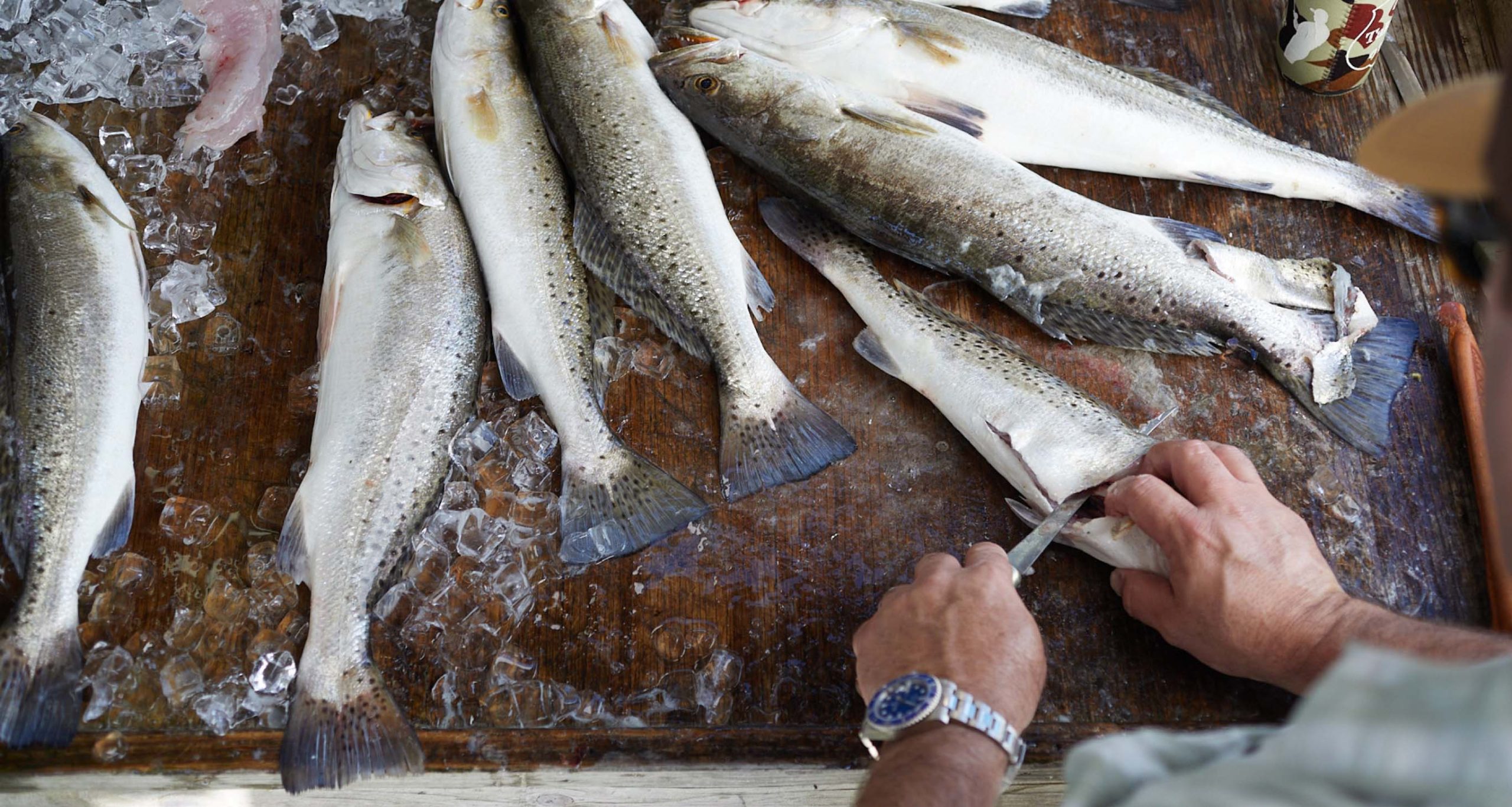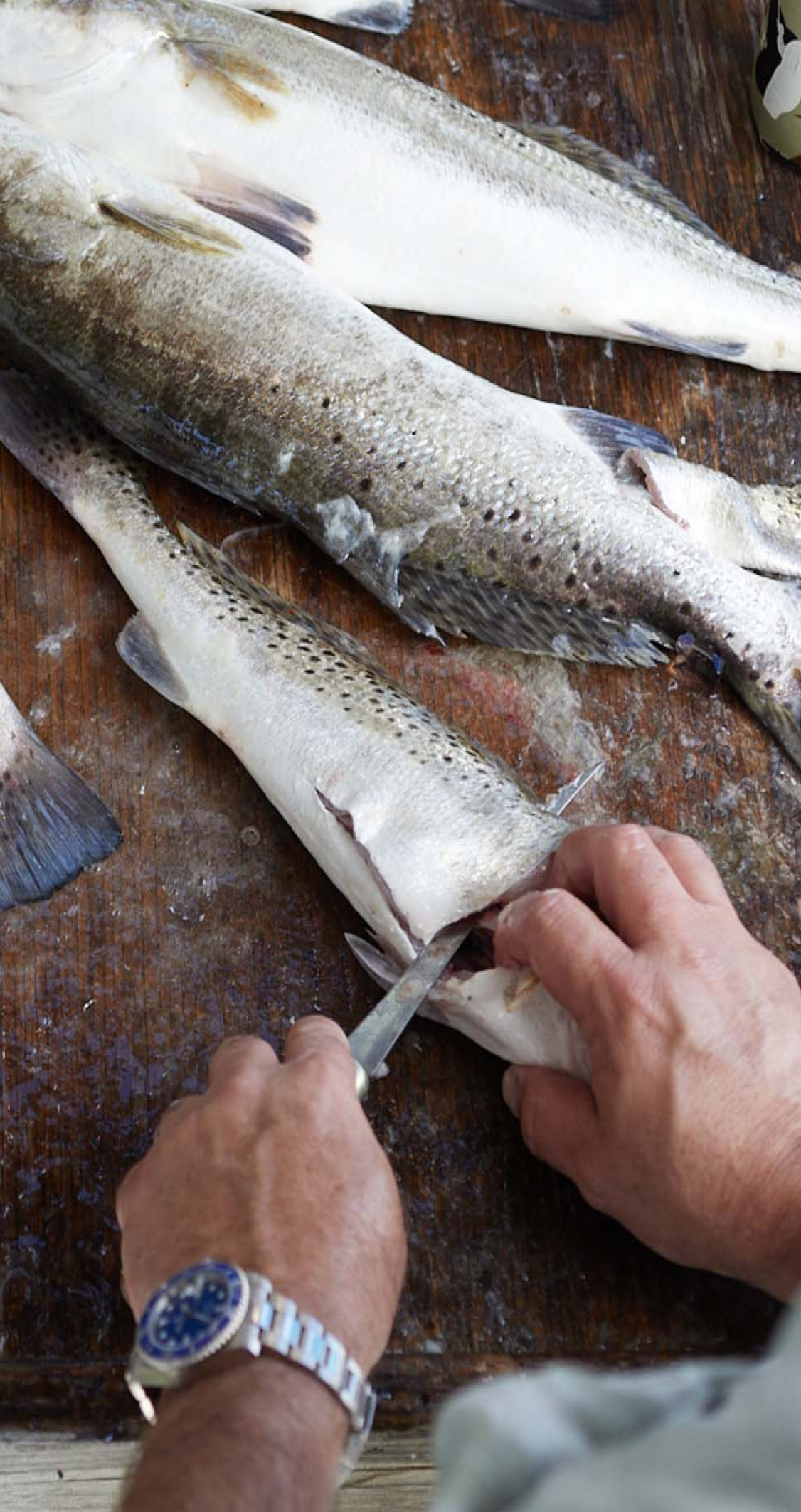
You landed the fish, now what? Here’s my guide to ensuring your catch is at its freshest for the table.
Anglers love to talk about angling, which makes sense. You’ll notice, however, that the conversation peters out after they finish describing their unbelievably large catch. Onto the next story.
I can’t help but think that we’re missing half of the narrative, maybe even the most important part—what to do with it afterwards. The angling world is overrun with mishandled catches, and you’ve probably seen the unfortunate result: a soggy, gray piece of meat that tastes similar to how a pair of waders smell after you’ve been trudging around in them all day.
As a chef, I can’t stand idly by and let some of my favorite table fare go mistreated. I believe Eliza Acton put it nicely about 179 years ago in her book, Modern Cookery for Private Families: “Nothing can more effectually destroy the appetite, or disgrace the cook, than fish sent to table imperfectly cleaned.”
I, for one, would love to avoid destruction and disgrace whenever possible, so let’s talk about how to best care for your catch, starting with the boat and ending with a delicious bite.
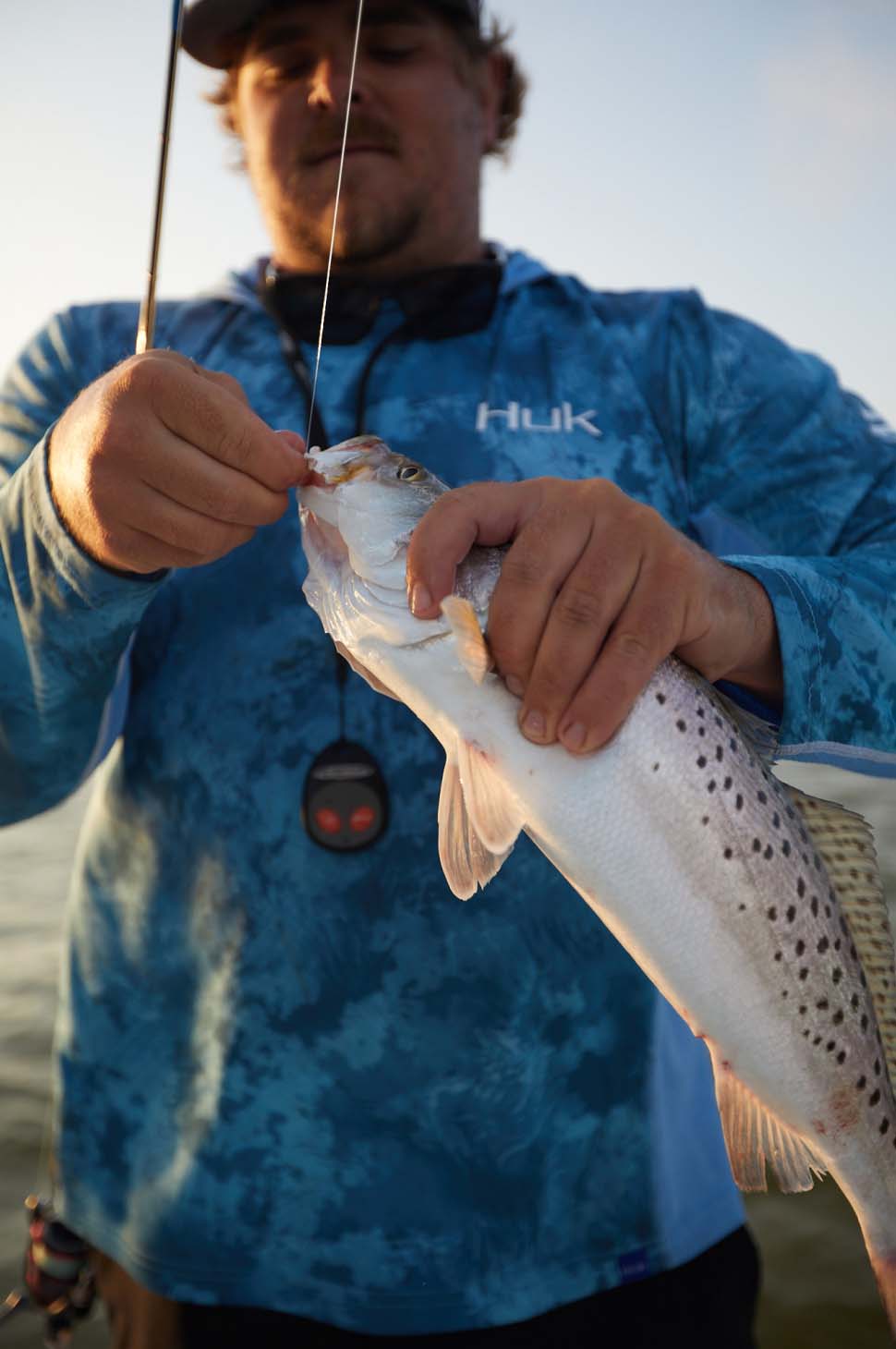

I believe Eliza Acton put it nicely about 179 years ago in her book, Modern Cookery for Private Families: “Nothing can more effectually destroy the appetite, or disgrace the cook, than fish sent to table imperfectly cleaned.”

Step One: Out of the Water
At this point, you’ve already decided that you want to keep a fish. Assuming you’ve legally and responsibly made this decision, more power to you and congrats on catching dinner. But, let’s not celebrate quite yet. Dispatching and storing the fish is, bar none, the step that is fumbled most often on boats, docks, and on banks around the world. We need to get this right.
Here are my three fish-care commandments:
- Thou shalt not put a live fish on ice.
- Thou shalt not put a live fish in a live well for an extended period of time.
- Thou shalt not put a live fish on a stringer for an extended period of time.
On paper, these methods may seem fine, but all of these methods stress out fish for long periods of time as they die a slow death. Not only is this inhumane, it’s also detrimental to the meat. Stress releases lactic acid, cortisol, and adrenaline, which will give the meat an ‘off’ flavor and may affect the texture as well. Even then, a fish will likely die in a live well or on a stringer, and at that point you’re in a race against time to get your (probably already spoiled) meat to the fridge before things get bad.
The good news is that the correct way is oftentimes simpler than the incorrect way.
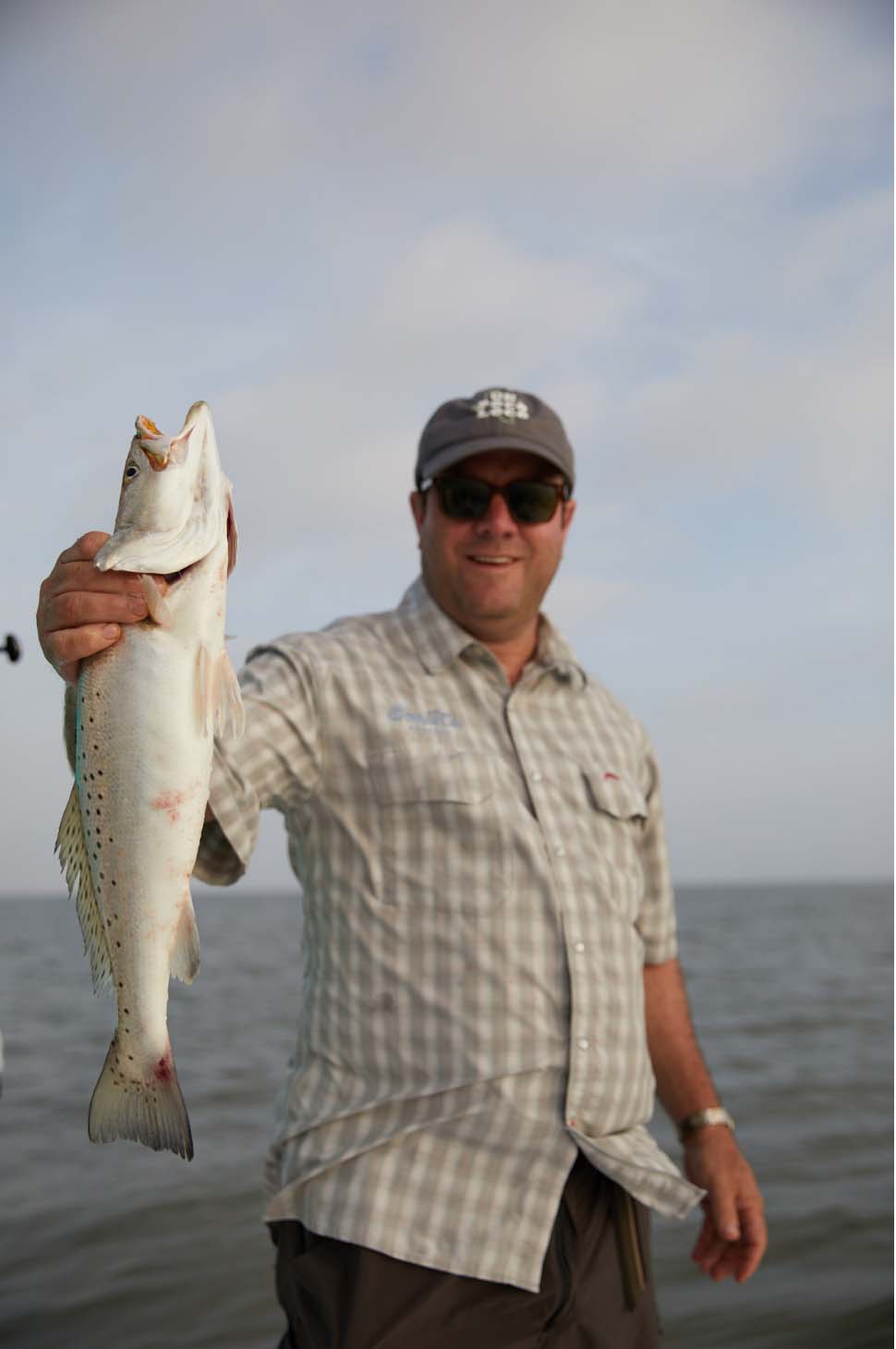
A successful day on the water is only half the story. This particularly story ended happily, with a boat full of fresh speckled trout.
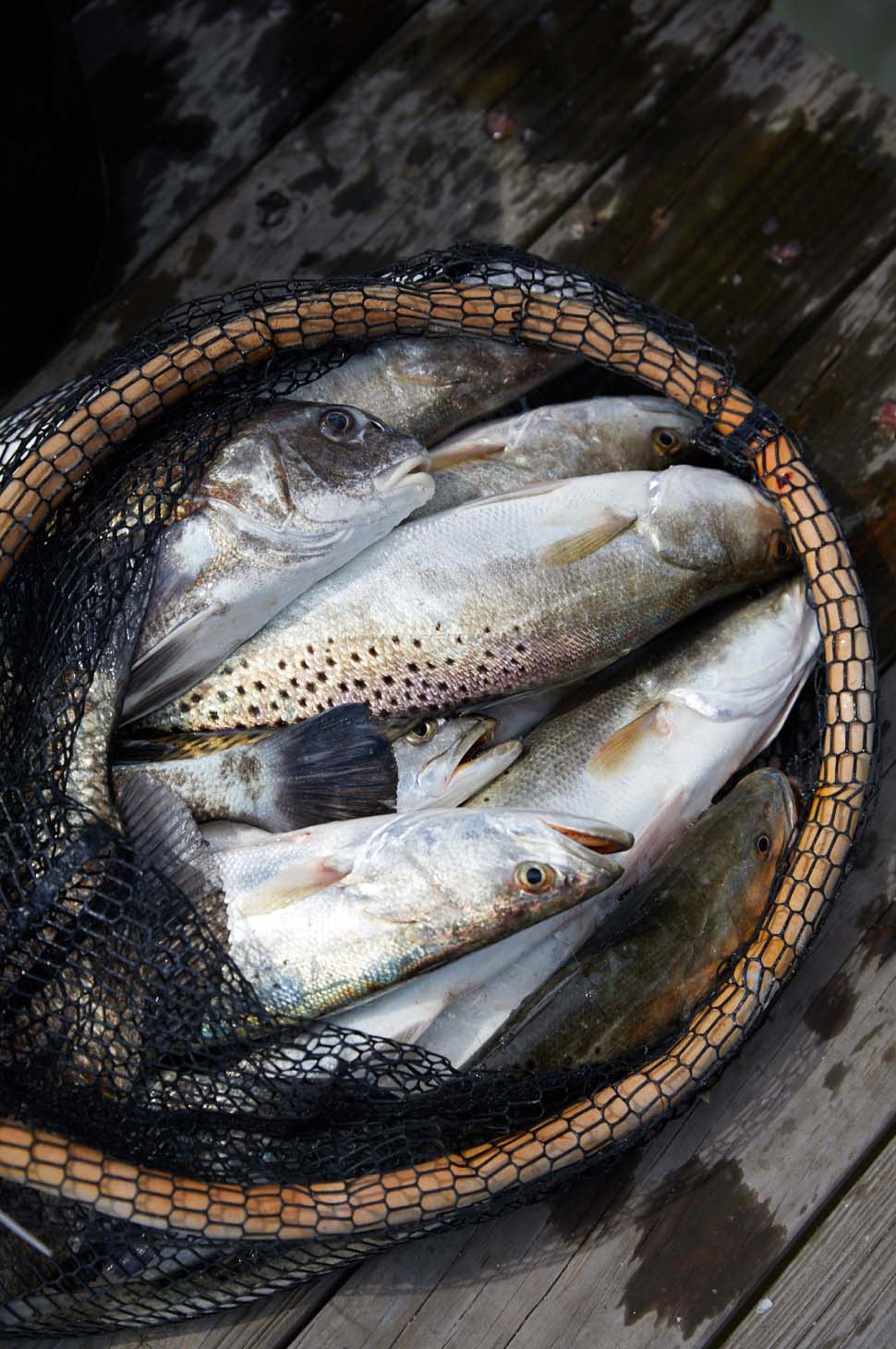
First things first, decide ahead of time if you’re going to potentially keep fish and then bring a cooler full of ice. When you land your catch, you can either give it a forceful strike on the head with a heavy, blunt object to stun and/or kill it, cut the gills, and put it in the cooler. It may seem messy, but it’s a quick and effective way to humanely kill your catch and ensure it stays fresh. The Japanese have been using a practice called ike jime for centuries, which emphasizes the same basic principles of stunning and bleeding (and they know a thing or two about delicious seafood).
The more quickly you kill the fish, the more humane and less stressed it will be, and removing the blood from the fish will stop the meat from taking on what many people describe as a “fishy” flavor. Personally, I think this is a misnomer for “poorly prepared fish.”

The Japanese have been using a practice called ike jime for centuries, which emphasizes the same basic principles of stunning and bleeding (and they know a thing or two about delicious seafood).

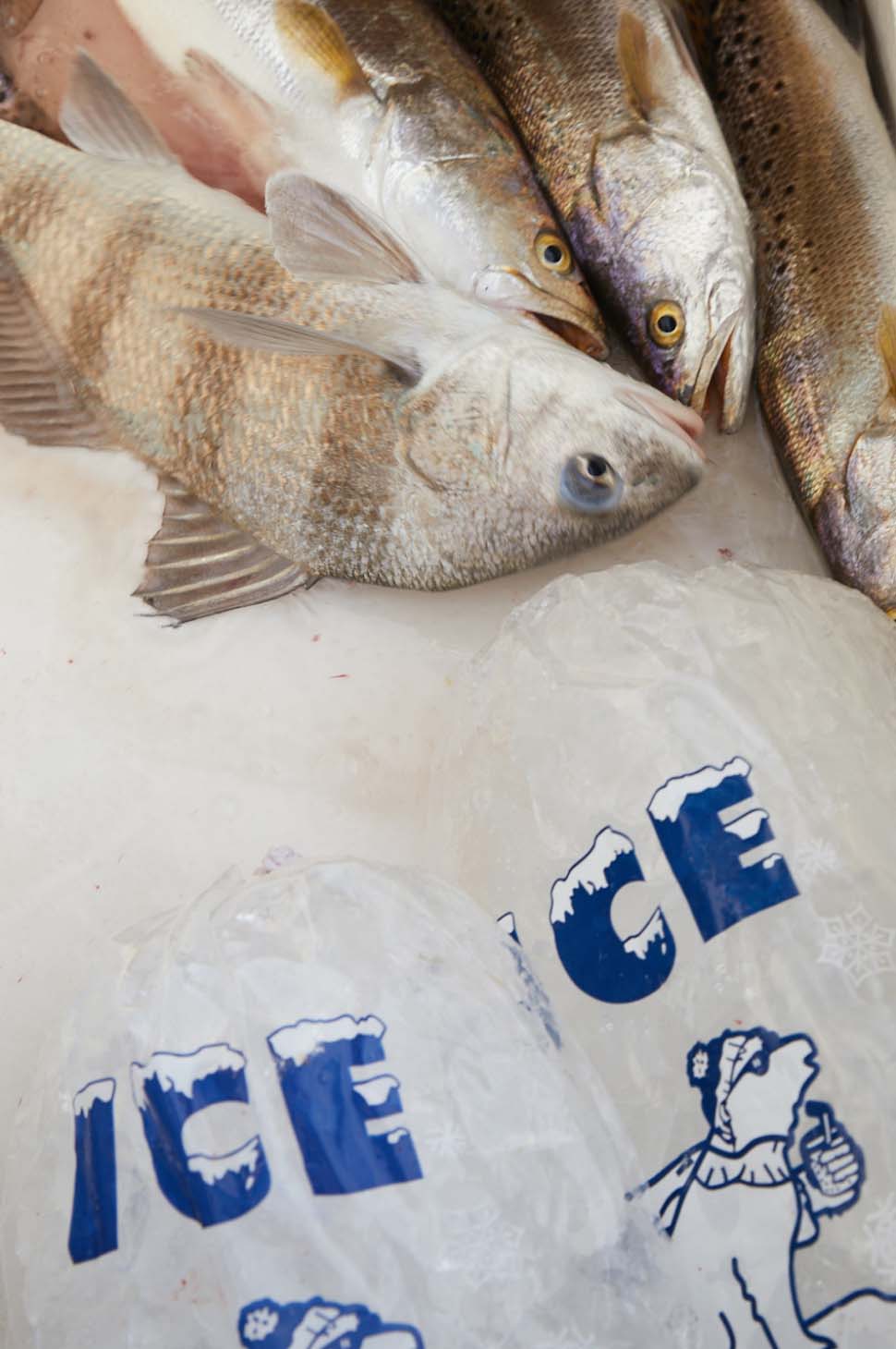
Lastly, get that fish on ice. At this point, you most likely don’t need to do any more cleaning of the fish. If you’re still going to be fishing for a bit, simply let the fish cool off on ice and enjoy your day on the water—it’ll be fine well after your boat runs out of gas. I highly recommend at least gutting the fish as soon as you get back to the dock because a gutted fish will last for up to five days on ice, giving you much more flexibility on multi-day trips or when life gets in the way.

Part of preparing your catch is dream up all of the different ways you can use the meat. It’s work, but the fun kind.
Now it’s time to decide what to do with your catch. There’s no one answer, but I’m going to do my best to make this comprehensive.
The first step is simple. Do you want to eat the fish now or later? If you follow the previous steps, then you have three to five days to get the meat on the table—but sooner is always better. If there’s any chance of it being longer, it’s best to prepare for freezing. You’re still left with the choice of how to freeze the fish. This depends on how you want to cook it and what type of fish you’re freezing, but here are three options:
Keep it whole
This is the simplest method because, well, you don’t have to do anything. That being said, I like to reserve this method for the appropriate type of fish. Some classic fish for serving whole are redfish, red snapper, flounder, and freshwater trout.
Half shell
This term simply refers to keeping the skin on a filet, which is a great way to grill a fish. This works well with fish that have thicker skin, like salmon, steelhead, redfish, snapper, and countless other types of saltwater fish.
Filets
This is the most common type of preparation, where you cut the meat off of the fish and store it as you would most other kinds of meat. What it lacks in pizazz, it makes up for in versatility and efficiency. I’m not going to dive into fileting in this article, but this video from Epicurious has everything you need to know.
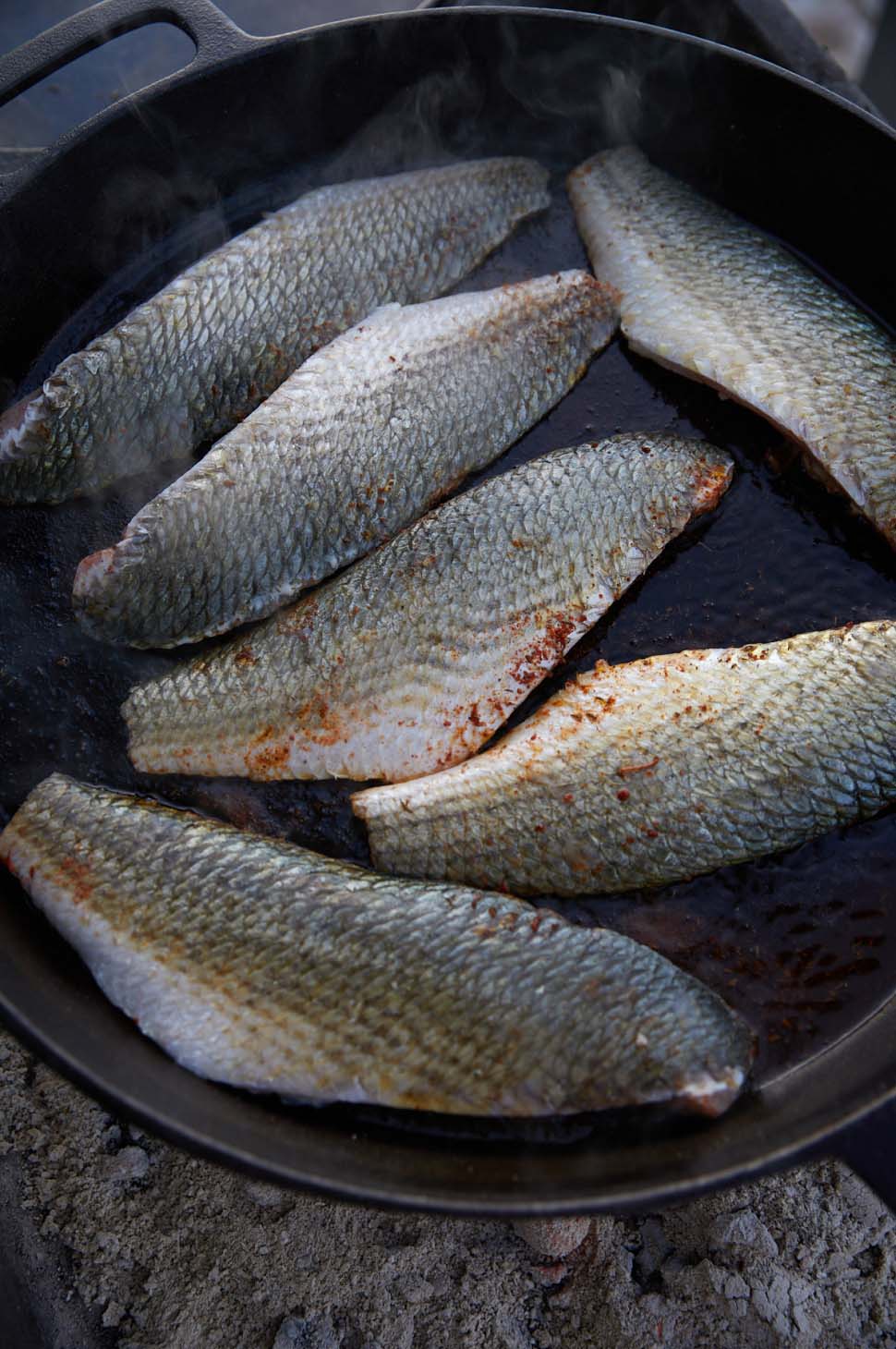

For whole fish and fish on the half shell, it’s best to descale a fish before freezing, which you can do using the edge of a spoon or the spine of a knife and scraping against the scales towards the head.

For whole fish and fish on the half shell, it’s best to descale a fish before freezing, which you can do using the edge of a spoon or the spine of a knife and scraping against the scales towards the head. For half-shell preparations and filets, keep an eye out for any fat in the meat. Fish fat is generally a brownish-gray color and is easy to spot against light-colored meat. While it doesn’t necessarily have to be removed, any hint of an off flavor will most likely come from the fat, so it just helps to ensure a clean, fresh taste to the meat. I’ve found this to be particularly true when cleaning catfish—cut that fat off.
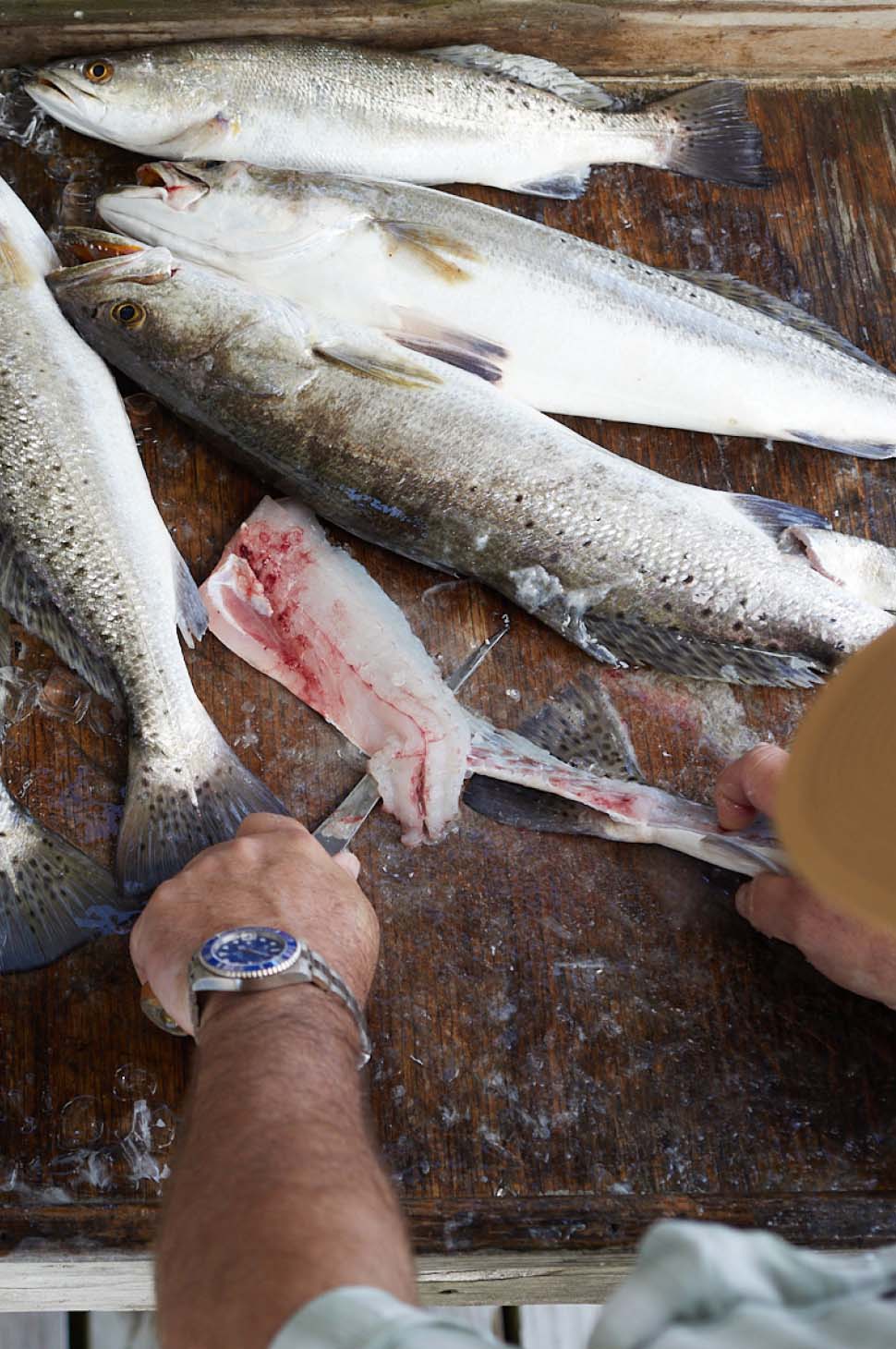
There’s a reason most anglers filet their fish. It’s not the most exciting preparation, but there are a million dishes you can make with a well-prepared cut.
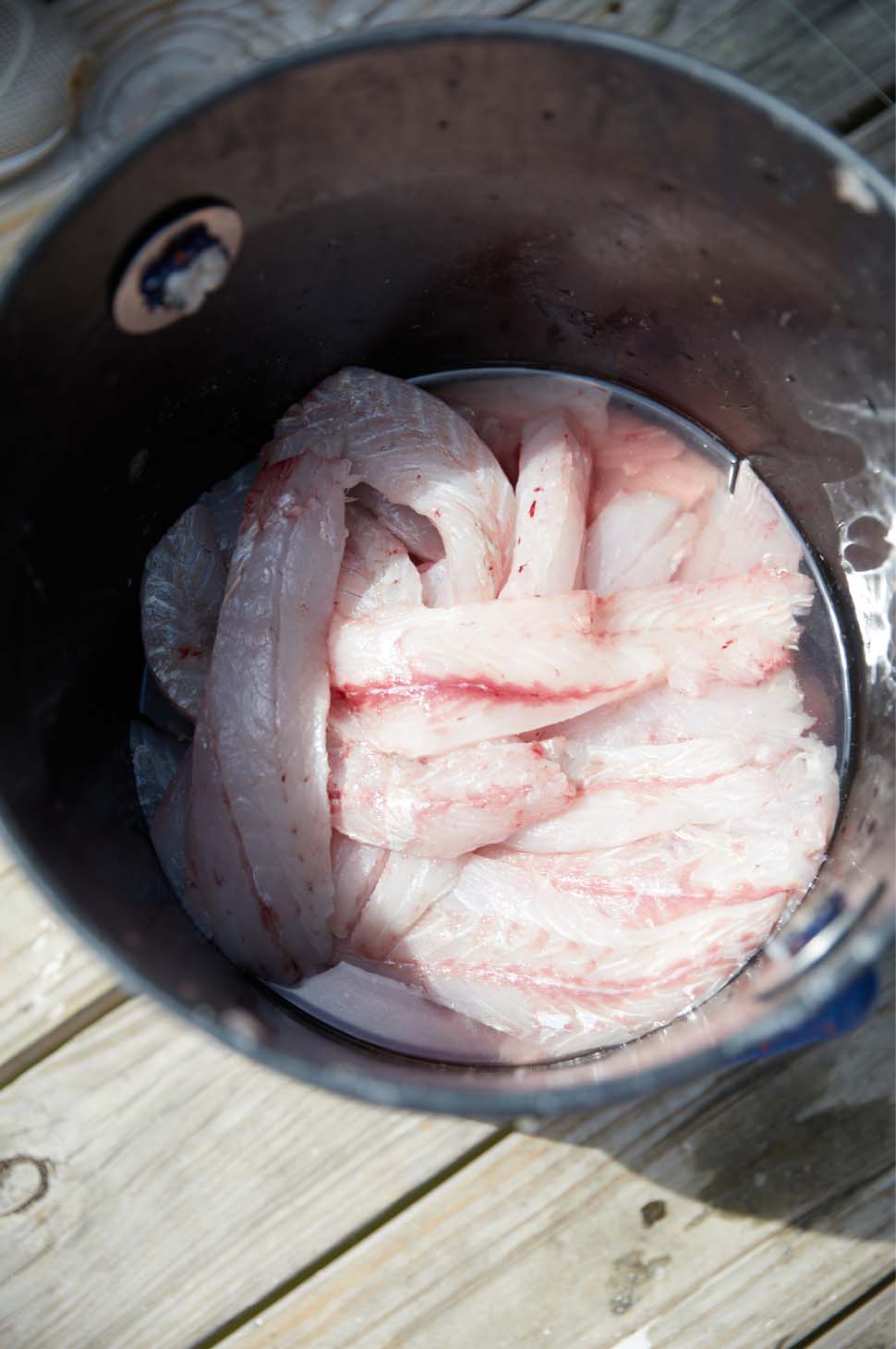
Step Four: Storage
Or, maybe it’s time to tuck that fish away for another day. When putting fish in the freezer, I like to keep the meat as dry as possible. If you have the time, I like to put the fish in a pan with paper towels to soak up some moisture—you can leave it covered in a fridge for a few hours or even overnight. If you don’t have the time, a quick pat with a paper towel is fine.
My favorite way to store fish is with vacuum sealing. It’s the best way to keep air away from the fish and it stores very nicely in your freezer. If you don’t have a vacuum sealer, here’s a trick—put the fish in an appropriately sized zip lock bag and submerge the bag in a sink or tub full of water with the opening above the surface. Essentially, the pressure from the water will create a vacuum, pushing out the air from the bag. It’s not quite as effective as the real deal, but can be surprisingly effective.
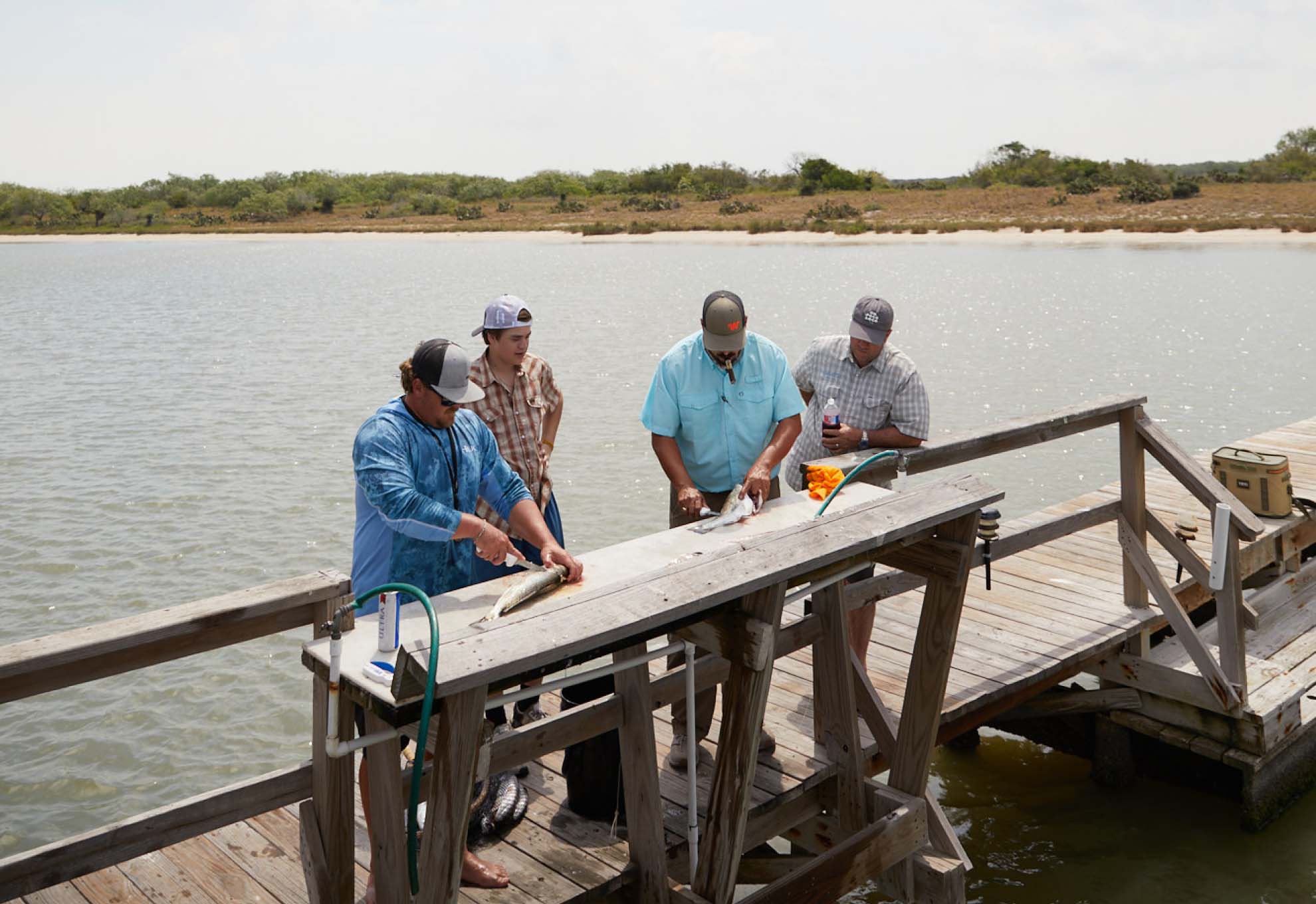
Take note of who’s not helping out at the dock—because the first round is sure as hell on them.
If neither of those methods strike your fancy, you can wrap it as well. Start by wrapping the meat in plastic wrap, then wrap it again with butcher paper. Tape it up, label it, and you’re good to go. I’d recommend eating the fish sooner than later, though, because this method is by far the most prone to freezer damage from air leaking into the wrap. Once frozen, the FDA says you can keep raw fish for up to eight months—but a well-prepared piece of fish meat shouldn’t have to last that long in the freezer.
You may be thinking, “This seems like a lot of work.” Well, it is, but so is planning a trip, driving, tying knots, casting, and nursing that sunburn, so a little extra won’t hurt.
You may be thinking, “This seems like a lot of work.” Well, it is, but so is planning a trip, driving, tying knots, casting, and nursing that sunburn, so a little extra won’t hurt. It’s also the least we can do for the resource. No matter how you swing it, that dinner on your table comes at a cost, and as anglers, let’s show some respect to the fish by doing whatever we can to ensure the meat stays fresh and delicious for the table. I know anglers love their stories, but catching the fish is just part of it—don’t forget to nail the ending.
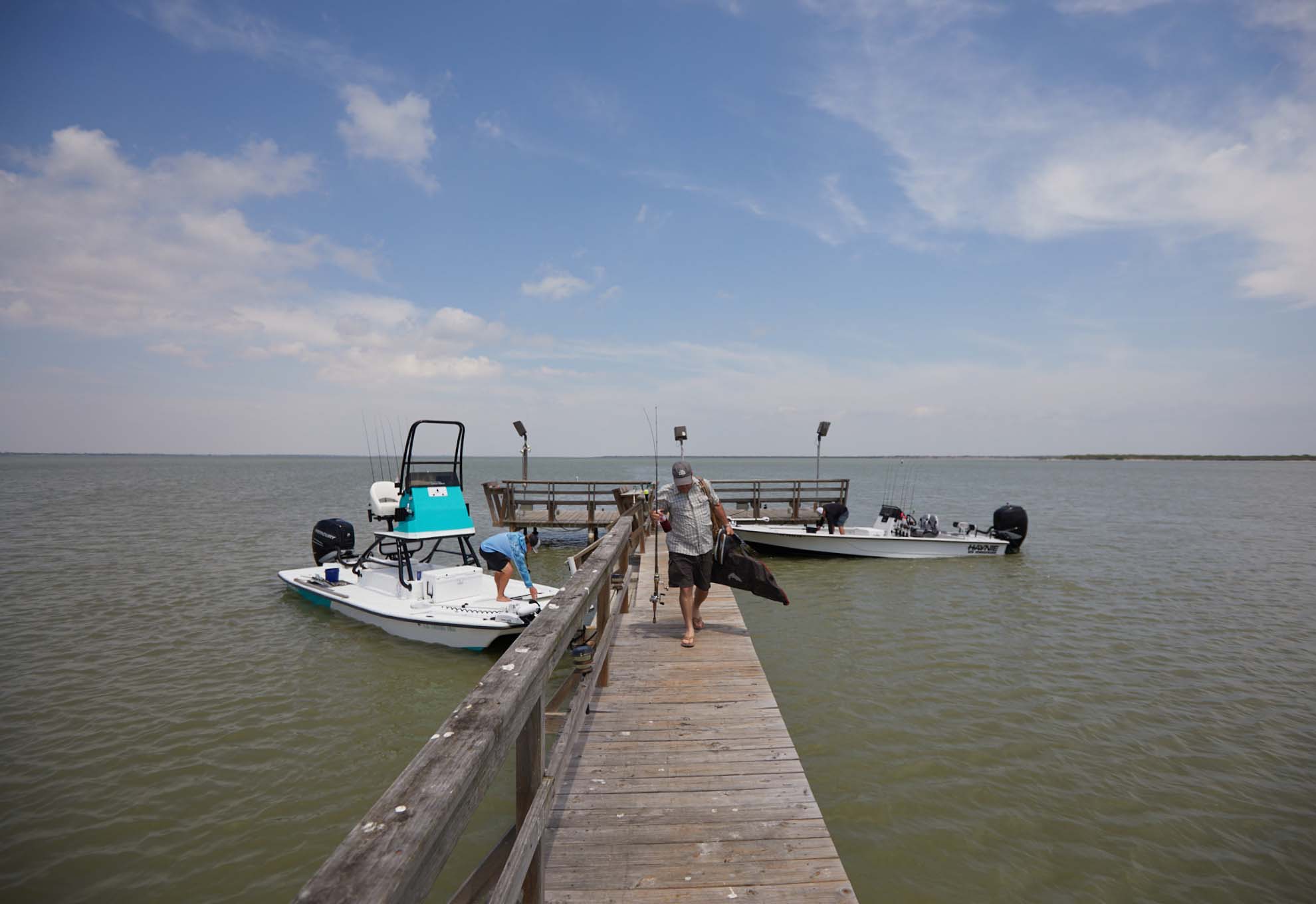
Whether you’re fishing or cleaning your catch, just remember to soak it all up. A good time on the water doesn’t happen every day, so you may as well make the most of it.
